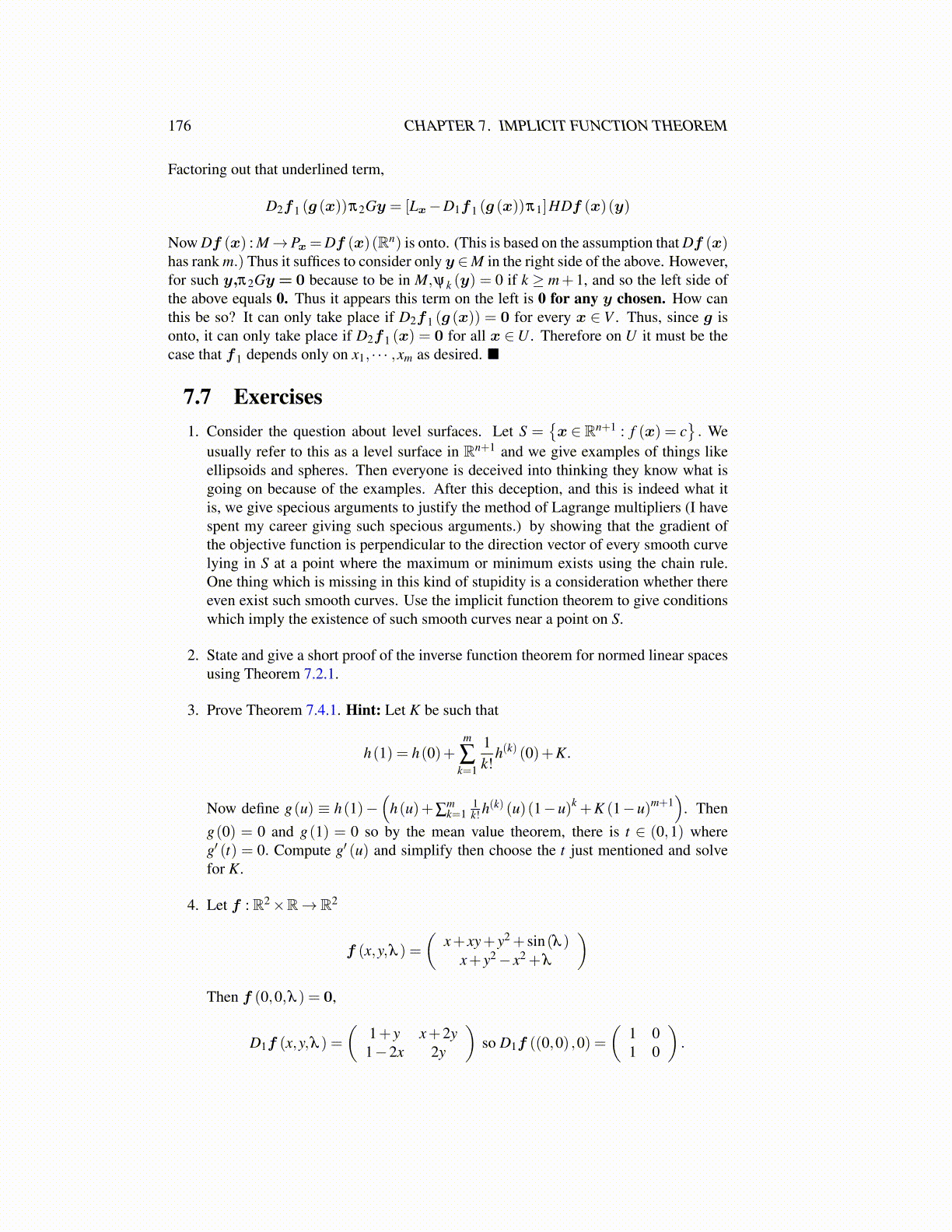
176 CHAPTER 7. IMPLICIT FUNCTION THEOREM
Factoring out that underlined term,
D2f1 (g (x))π2Gy = [Lx−D1f1 (g (x))π1]HDf (x)(y)
Now Df (x) : M→Px =Df (x)(Rn) is onto. (This is based on the assumption that Df (x)has rank m.) Thus it suffices to consider only y ∈M in the right side of the above. However,for such y,π2Gy = 0 because to be in M,ψk (y) = 0 if k ≥ m+ 1, and so the left side ofthe above equals 0. Thus it appears this term on the left is 0 for any y chosen. How canthis be so? It can only take place if D2f1 (g (x)) = 0 for every x ∈ V . Thus, since g isonto, it can only take place if D2f1 (x) = 0 for all x ∈U . Therefore on U it must be thecase that f1 depends only on x1, · · · ,xm as desired. ■
7.7 Exercises1. Consider the question about level surfaces. Let S =
{x ∈ Rn+1 : f (x) = c
}. We
usually refer to this as a level surface in Rn+1 and we give examples of things likeellipsoids and spheres. Then everyone is deceived into thinking they know what isgoing on because of the examples. After this deception, and this is indeed what itis, we give specious arguments to justify the method of Lagrange multipliers (I havespent my career giving such specious arguments.) by showing that the gradient ofthe objective function is perpendicular to the direction vector of every smooth curvelying in S at a point where the maximum or minimum exists using the chain rule.One thing which is missing in this kind of stupidity is a consideration whether thereeven exist such smooth curves. Use the implicit function theorem to give conditionswhich imply the existence of such smooth curves near a point on S.
2. State and give a short proof of the inverse function theorem for normed linear spacesusing Theorem 7.2.1.
3. Prove Theorem 7.4.1. Hint: Let K be such that
h(1) = h(0)+m
∑k=1
1k!
h(k) (0)+K.
Now define g(u) ≡ h(1)−(
h(u)+∑mk=1
1k! h(k) (u)(1−u)k +K (1−u)m+1
). Then
g(0) = 0 and g(1) = 0 so by the mean value theorem, there is t ∈ (0,1) whereg′ (t) = 0. Compute g′ (u) and simplify then choose the t just mentioned and solvefor K.
4. Let f : R2×R→ R2
f (x,y,λ ) =(
x+ xy+ y2 + sin(λ )x+ y2− x2 +λ
)Then f (0,0,λ ) = 0,
D1f (x,y,λ ) =(
1+ y x+2y1−2x 2y
)so D1f ((0,0) ,0) =
(1 01 0
).